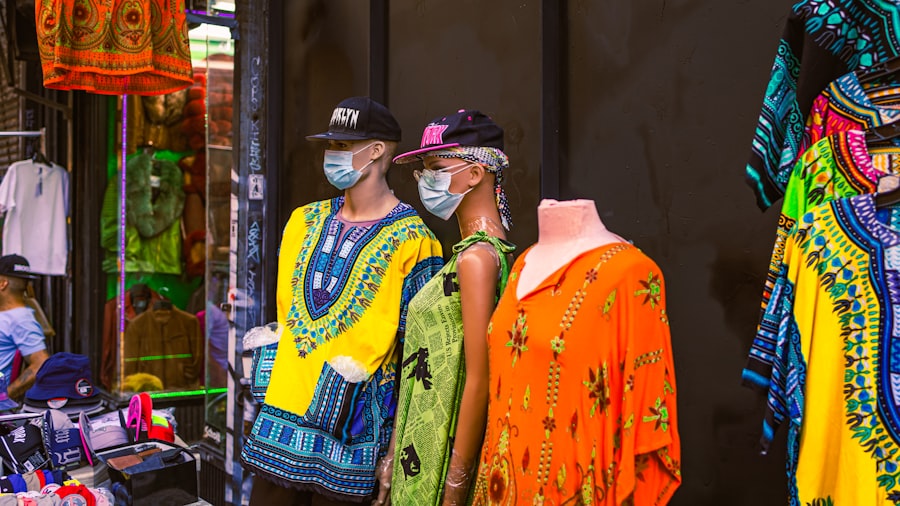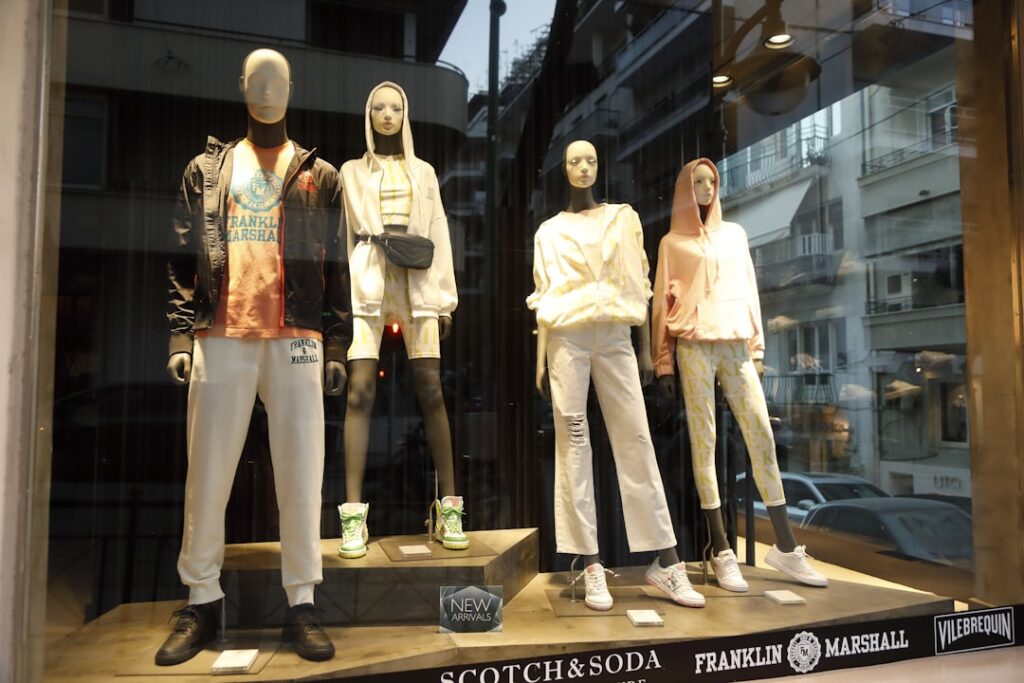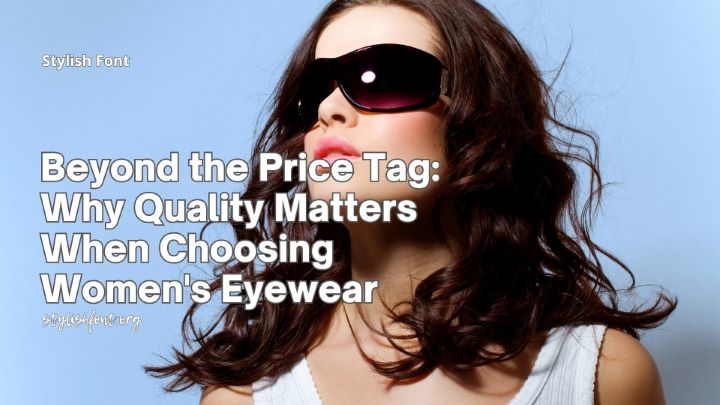In recent years, the fashion industry has witnessed a significant transformation, with a growing emphasis on sustainability and environmental responsibility. This shift, often referred to as the rise of climate-positive fashion, reflects a broader societal awareness of the urgent need to address climate change. As consumers become increasingly conscious of their purchasing decisions, brands are responding by adopting practices that not only minimize harm to the environment but actively contribute to its restoration.
This movement is not merely a trend; it represents a fundamental change in how fashion is conceptualized, produced, and consumed. The rise of climate-positive fashion is characterized by a collective effort among designers, manufacturers, and consumers to create a more sustainable future. This paradigm shift is fueled by a combination of factors, including the alarming statistics surrounding climate change, the depletion of natural resources, and the ethical implications of fast fashion.
As awareness grows, so does the demand for transparency and accountability within the industry. Fashion is no longer just about aesthetics; it is increasingly intertwined with environmental stewardship and social responsibility.
Key Takeaways
- Climate-positive fashion is on the rise, with more brands and consumers embracing sustainable practices.
- Climate-positive fashion refers to clothing and accessories that have a positive impact on the environment, reducing carbon emissions and promoting sustainability.
- The fashion industry has a significant impact on the environment, contributing to pollution, waste, and carbon emissions.
- Leading brands in climate-positive fashion include Patagonia, Stella McCartney, and Eileen Fisher, who prioritize sustainable materials and ethical practices.
- Consumers play a crucial role in climate-positive fashion by making informed choices, supporting sustainable brands, and advocating for change in the industry.
What is Climate-Positive Fashion?
The Difference Between Sustainable and Climate-Positive Fashion
While sustainable fashion focuses on reducing harm, such as minimizing waste and using eco-friendly materials, climate-positive fashion aims to restore ecosystems and combat climate change. This approach involves practices that not only neutralize carbon emissions but also contribute to carbon sequestration, biodiversity enhancement, and the regeneration of natural resources.
A Holistic View of Environmental Impact
At its core, climate-positive fashion embodies a holistic view of environmental impact. It encourages brands to consider the entire lifecycle of their products, from raw material sourcing to end-of-life disposal. This means prioritizing regenerative agriculture, utilizing renewable energy sources, and implementing circular economy principles.
Creating a Positive Impact on the Planet’s Health
By adopting these practices, brands can create garments that not only leave a minimal footprint but also contribute positively to the planet’s health.
The Impact of Fashion on the Environment

The fashion industry has long been recognized as one of the most polluting sectors globally. From water-intensive cotton farming to toxic dyeing processes, the environmental toll of fashion is staggering. According to various studies, the industry accounts for approximately 10% of global carbon emissions and is a significant contributor to water pollution and waste generation.
The linear model of “take-make-dispose” has led to an unsustainable cycle that threatens ecosystems and exacerbates climate change. Moreover, the fast fashion model has accelerated these negative impacts. With consumers encouraged to buy more frequently and discard items after minimal use, the demand for cheap, disposable clothing has skyrocketed.
This not only results in vast amounts of textile waste but also places immense pressure on natural resources. As landfills overflow with discarded garments, the need for a paradigm shift in how fashion is produced and consumed becomes increasingly urgent.
Brands Leading the Way in Climate-Positive Fashion
| Brand | Carbon-Neutral Goal | Sustainable Materials Used |
|---|---|---|
| Patagonia | By 2025 | Organic cotton, recycled polyester |
| Adidas | By 2050 | Recycled polyester, sustainable cotton |
| Levi’s | By 2025 | Water1 and energy-saving technologies |
Several pioneering brands have emerged as leaders in the climate-positive fashion movement, setting benchmarks for others to follow. These companies are not only committed to reducing their environmental impact but are also actively working towards creating a net positive effect on the planet. For instance, brands like Patagonia have long championed environmental activism, integrating sustainable practices into their business model while advocating for conservation efforts.
Another notable example is Eileen Fisher, which has implemented a comprehensive sustainability strategy that includes using organic materials, promoting fair labor practices, and encouraging customers to recycle their old garments through take-back programs. These brands exemplify how businesses can thrive while prioritizing environmental responsibility, inspiring others in the industry to adopt similar practices.
Sustainable Materials and Practices in Fashion
The foundation of climate-positive fashion lies in the materials used and the practices employed throughout the production process. Sustainable materials such as organic cotton, Tencel, hemp, and recycled polyester are gaining traction as alternatives to conventional textiles that often rely on harmful chemicals and unsustainable farming practices. These materials not only reduce environmental impact but also promote healthier ecosystems.
In addition to material choices, innovative practices such as zero-waste design and closed-loop production are becoming increasingly popular among forward-thinking brands. Zero-waste design focuses on creating garments in a way that minimizes fabric waste during production, while closed-loop systems aim to recycle materials at the end of a product’s life cycle. By embracing these sustainable practices, brands can significantly reduce their ecological footprint while contributing positively to the environment.
The Role of Consumers in Climate-Positive Fashion

The Power of Consumer Choice
This shift in consumer behavior has prompted many companies to prioritize transparency and ethical practices in their operations. Moreover, consumers can advocate for climate-positive fashion by supporting brands that prioritize sustainability and holding those that do not accountable.
Investing in Sustainability
By choosing to invest in high-quality, durable pieces rather than fast fashion items, individuals can contribute to a more sustainable industry. This conscious approach to fashion can have a significant impact on reducing waste and promoting environmentally friendly practices.
Amplifying Awareness
Additionally, engaging in conversations about climate-positive practices on social media platforms can amplify awareness and encourage others to make informed choices. By sharing knowledge and experiences, consumers can inspire a wider movement towards sustainable fashion.
Collaborations and Initiatives in the Fashion Industry
The journey towards climate-positive fashion is not one that brands can undertake alone; collaboration is essential for driving meaningful change within the industry. Numerous initiatives have emerged that bring together designers, manufacturers, and environmental organizations to share knowledge and resources. For example, the Fashion Pact is a global coalition of companies committed to addressing climate change through collective action.
These collaborations often focus on shared goals such as reducing carbon emissions, promoting circularity, and enhancing biodiversity within supply chains. By working together, brands can leverage their collective influence to create systemic change that benefits both the environment and society at large. Such initiatives highlight the importance of unity in tackling complex challenges within the fashion industry.
Innovations in Climate-Positive Fashion Technology
Technological advancements are playing a crucial role in facilitating the transition towards climate-positive fashion. Innovations such as 3D printing, digital design tools, and blockchain technology are revolutionizing how garments are created and tracked throughout their lifecycle. For instance, 3D printing allows for precise production with minimal waste, while digital design tools enable designers to visualize their creations without relying on physical samples.
Blockchain technology is also emerging as a powerful tool for enhancing transparency within supply chains. By providing an immutable record of each step in a product’s journey—from raw material sourcing to final sale—blockchain can help consumers make informed choices about the brands they support. These technological innovations not only streamline production processes but also empower consumers to engage with fashion in a more responsible manner.
Challenges and Obstacles in Achieving Climate-Positive Fashion
Despite the progress made towards climate-positive fashion, significant challenges remain. One major obstacle is the entrenched nature of fast fashion and consumer habits that prioritize low cost over sustainability. Many consumers still gravitate towards inexpensive clothing options without considering their environmental impact, making it difficult for sustainable brands to compete.
Additionally, there is often a lack of standardized definitions and metrics for what constitutes “sustainable” or “climate-positive” practices within the industry. This ambiguity can lead to greenwashing—where brands falsely claim sustainability credentials—making it challenging for consumers to discern genuine efforts from mere marketing tactics. Overcoming these challenges requires ongoing education and advocacy from both consumers and industry stakeholders.
The Future of Climate-Positive Fashion
The future of climate-positive fashion holds immense potential for innovation and transformation within the industry. As awareness continues to grow regarding the environmental impacts of fashion, it is likely that more brands will adopt sustainable practices as part of their core business strategies. This shift could lead to a more circular economy where products are designed with longevity in mind and resources are reused rather than discarded.
Moreover, advancements in technology will likely play a pivotal role in shaping this future landscape. As new materials are developed and production processes become more efficient, brands will have greater opportunities to minimize their ecological footprint while meeting consumer demand for stylish yet sustainable clothing. The convergence of creativity and responsibility will define the next era of fashion.
How to Support and Advocate for Climate-Positive Fashion
Supporting climate-positive fashion requires both individual action and collective advocacy. Consumers can start by educating themselves about sustainable brands and making conscious purchasing decisions that prioritize quality over quantity. Engaging with local initiatives or organizations focused on promoting sustainable practices can also amplify efforts toward positive change.
Advocacy extends beyond personal choices; it involves raising awareness within communities about the importance of climate-positive practices in fashion. Sharing information on social media platforms or participating in discussions about sustainability can inspire others to consider their impact on the environment. By fostering a culture of accountability and responsibility within the fashion industry, individuals can contribute significantly to the movement towards climate-positive fashion.
In conclusion, climate-positive fashion represents a transformative approach that seeks not only to mitigate harm but also to restore and regenerate our planet’s ecosystems. As this movement gains momentum, it offers hope for a more sustainable future where style and environmental stewardship coexist harmoniously. Through collaboration, innovation, and conscious consumerism, the fashion industry can pave the way for meaningful change that benefits both people and the planet alike.
FAQs
What is climate-positive fashion?
Climate-positive fashion refers to the production and consumption of clothing that has a positive impact on the environment, specifically in terms of reducing carbon emissions and promoting sustainability.
How does climate-positive fashion differ from sustainable fashion?
While sustainable fashion aims to minimize the negative impact of the fashion industry on the environment, climate-positive fashion goes a step further by actively working to reduce carbon emissions and promote the sequestration of carbon from the atmosphere.
What are some examples of climate-positive fashion practices?
Examples of climate-positive fashion practices include using renewable energy in production processes, implementing carbon offset programs, utilizing regenerative agriculture for natural fibers, and investing in carbon capture and storage technologies.
Why is climate-positive fashion important?
Climate-positive fashion is important because the fashion industry is a significant contributor to carbon emissions and environmental degradation. By adopting climate-positive practices, the industry can help mitigate climate change and promote a more sustainable future.
How can consumers support climate-positive fashion?
Consumers can support climate-positive fashion by choosing to buy from brands that prioritize sustainability and carbon reduction, opting for clothing made from eco-friendly materials, and participating in clothing recycling and upcycling initiatives.





